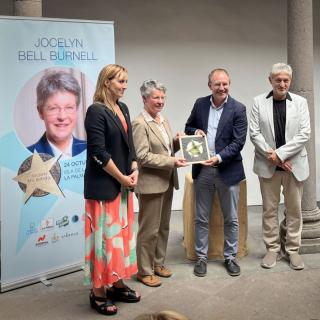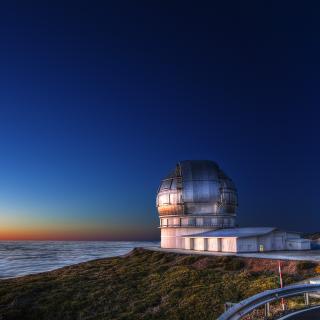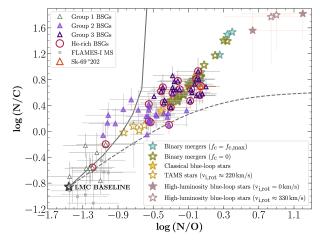A team of researchers at the University of Oviedo and the Instituto de Astrofísica de Canarias (IAC) have discovered and characterized an exoplanet, of type super-Earth, orbiting at the inner limit of the habitability zone of a red dwarf star, of type M0, named K2-286. They used data from the 15th campaign of the Kepler Space Telescope during its extended mission (K2).
The Kepler satellite was designed to discover exoplanets using the transit method. In this method the light from a star is measured to see whether it has periodic small dips, rather like an eclipse. If this occurs it is because there is an orbiting planet passing regularly between us and the star.
In the study the researchers also used OSIRIS and HARPS-N, instruments on the Gran Telescopio Canarias (GTC) and the Telescopio Nazionale Galileo (TNG) respectively, both at the Roque de los Muchachos Observatory (Garafía, La Palma).
The star K2-286, in the constellation of Libra, at a distance of 76 parsecs (244 light years), has a radius of 0.62 solar radii, and an effective surface temperature of 3,650 C. The planet is 2.1 times larger in radius than the Earth, an orbital period of 27,36 days, and an equilibrium temperature of around 60 C. The planet is at the inner limit of the habitability zone, which under suitable conditions allows it to keep water in liquid state on its surface, and necessary condition for life, as we know it.
The planet is particularly interesting not only because it is in the habitability zone of its star, but also because it is one of the best for measuring its atmospheric parameters with the future James Webb Space Telescope, and also for observations from the ground with which its mass can be accurately measured. "We have shown", say Javier de Cos and Enrique Díaz, researchers at the University of Oviedo, "that the activity of the star is moderate compared with other stars of similar basic parameters, which increases the chance that the planet could be habitable".
"The accurate data from HARPS-N, on the TNG in La Palma have allowed us to measure moderate activity in the star and to put limits to the mass of this new planet, of type super-Tierra" comments Borja Toledo, a doctoral student at the IAC and a co-author of the article.
"This exoplanet could be a good candidate for a new generation instrument such as ESPRESSO, recently installed on the VLT (Very Large Telescope) at the Paranal Observatory (Chile)" adds Jonay Gonzalez, a Ramón y Canal postdoctoral researcher at the IAV and another co-author of the article.
Reference: E. Díez Alonso et al. "A transiting super-Earth close to the inner edge of the habitable zone of an M0 dwarf star". Monthly Notices of the Royal Astronomical Society. Article in: https://academic.oup.com/mnras/advance-article/doi/10.1093/mnras/sty3467/5259110
Contacts in the IAC:
Jonay González: jonay [at] iac.es (jonay[at]iac[dot]es)
Borja Toledo: btoledo [at] iac.es (btoledo[at]iac[dot]es)



